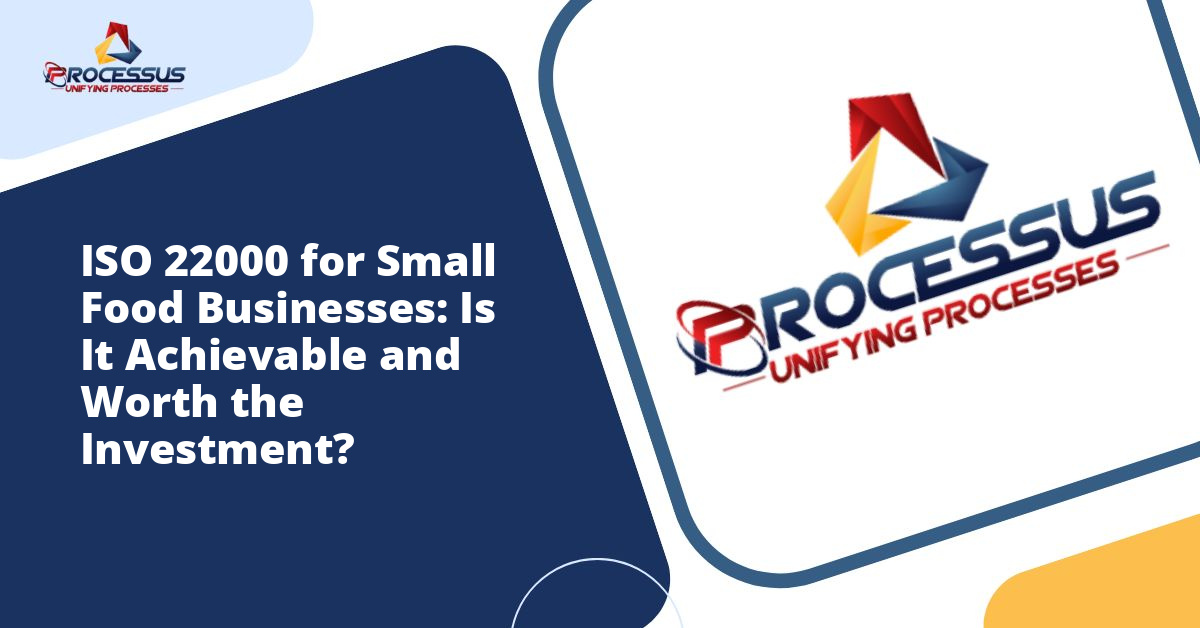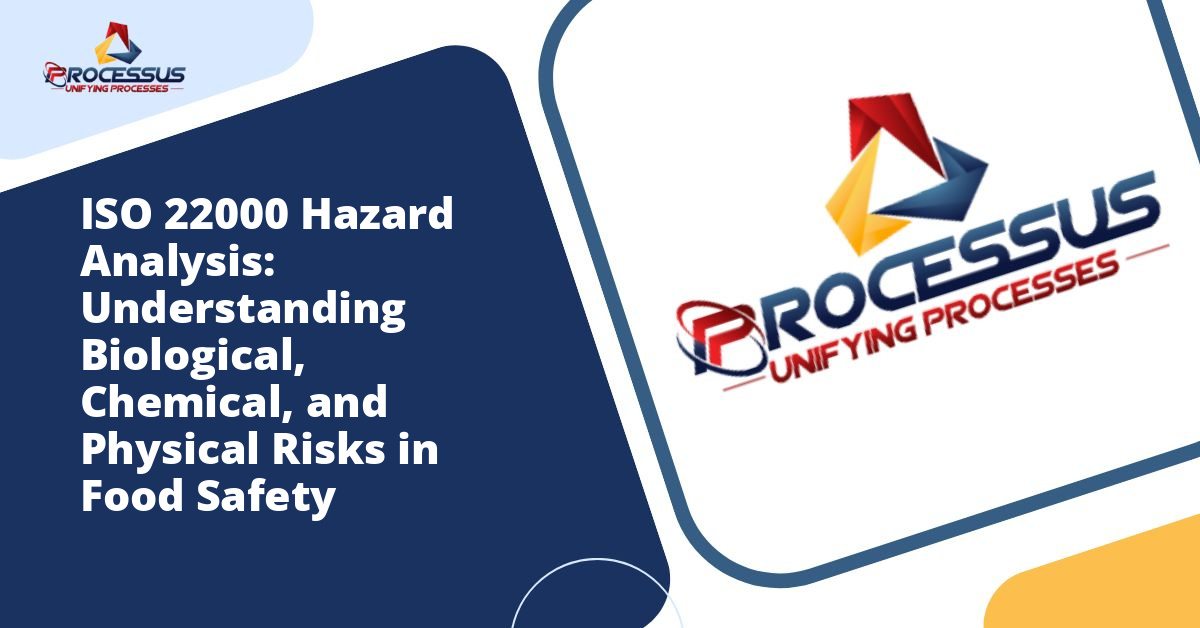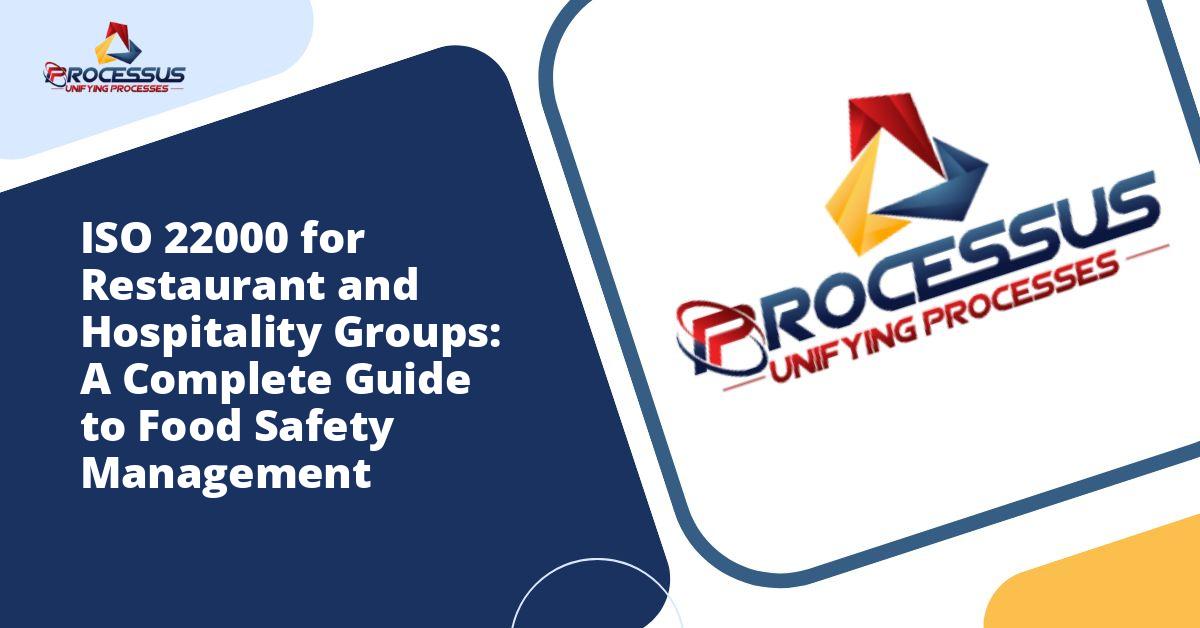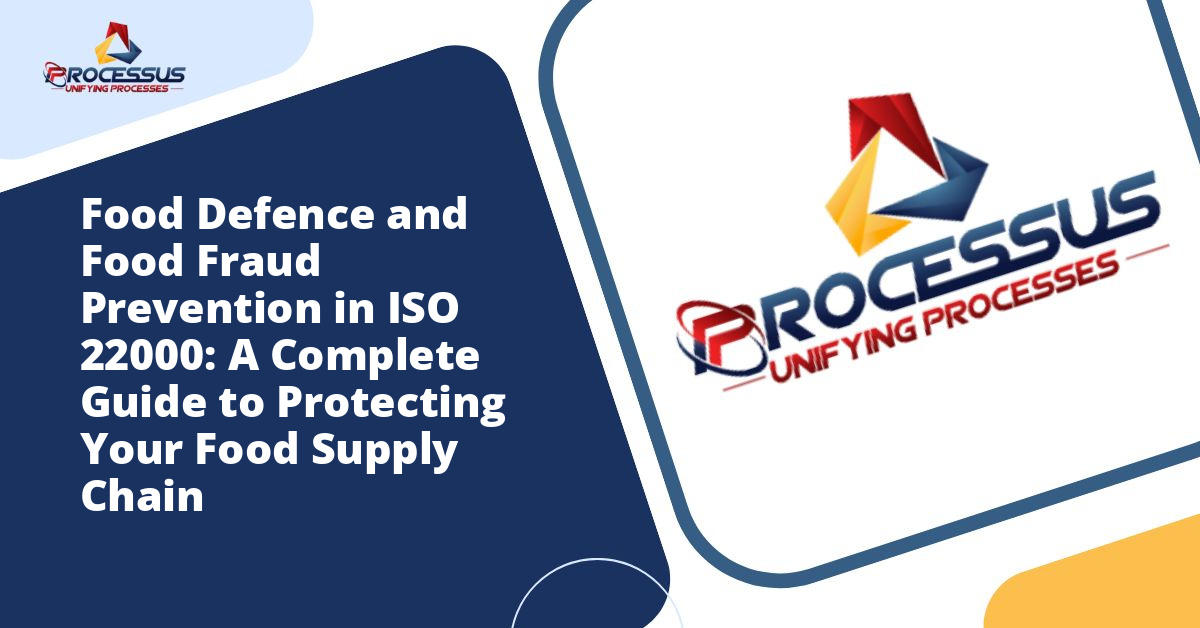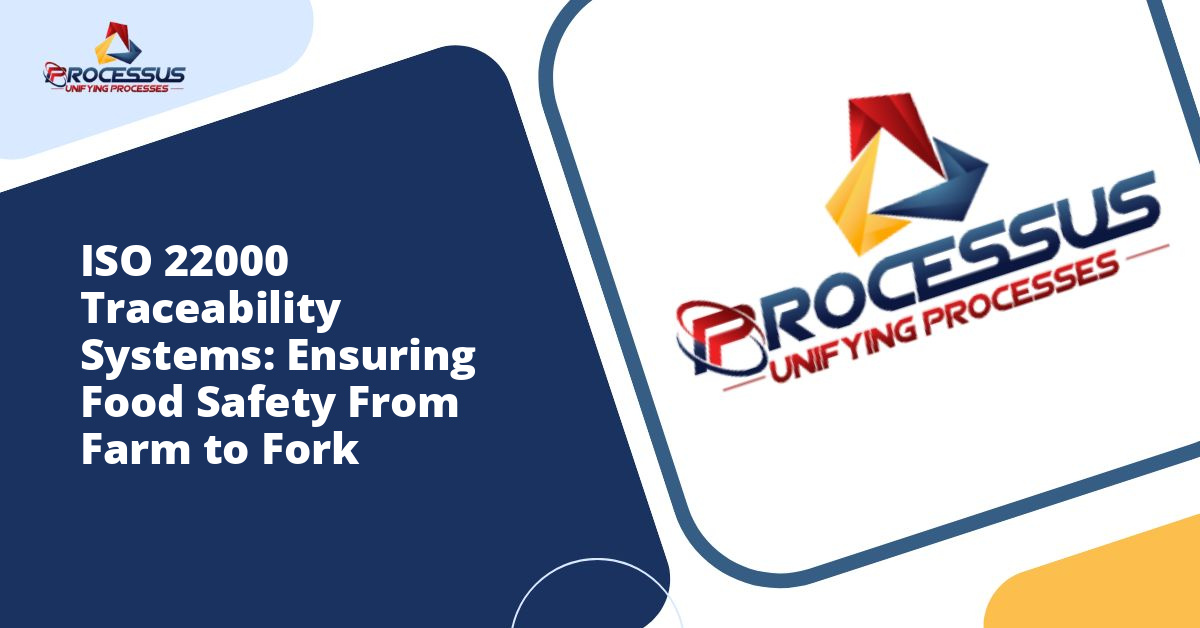The global food industry faces increasing scrutiny regarding safety standards, and small food businesses often find themselves wondering whether internationally recognized certifications like ISO 22000 are within their reach. The short answer is yes, but the journey requires understanding, commitment, and strategic planning. This comprehensive guide explores how small food businesses can successfully implement ISO 22000 and whether the benefits justify the effort.
Understanding ISO 22000: What Small Food Businesses Need to Know
ISO 22000 represents an international standard for food safety management systems, designed to ensure that organizations throughout the food chain can identify and control food safety hazards. Unlike many people assume, this certification was not created exclusively for large corporations with extensive resources. The standard’s framework is scalable, making it adaptable for businesses of all sizes, from small artisan producers to multinational food manufacturers. You might also enjoy reading about HACCP Principles Within ISO 22000: A Complete Integration Guide for Food Safety Excellence.
The standard combines several key elements: interactive communication, system management, prerequisite programs, and HACCP (Hazard Analysis and Critical Control Points) principles. For small food businesses, understanding these components is the first step toward determining whether implementation is feasible for their operations. You might also enjoy reading about Prerequisite Programmes for ISO 22000 Compliance: A Complete Guide to Food Safety Management.
The Core Components of ISO 22000
ISO 22000 builds on established food safety principles while providing a comprehensive framework that integrates with other management systems. The standard requires organizations to establish, implement, maintain, and update a food safety management system that addresses interactive communication throughout the organization and along the food chain, management system structure, prerequisite programs, and HACCP principles. You might also enjoy reading about ISO 22000 vs FSSC 22000: Which Food Safety Certification Does Your Business Need?.
For small businesses, this might initially sound overwhelming, but each component serves a practical purpose that ultimately strengthens the business rather than burdening it unnecessarily.
The Reality Check: Challenges Small Food Businesses Face
Before diving into implementation strategies, it’s important to acknowledge the genuine challenges that small food businesses encounter when considering ISO 22000 certification. Recognizing these obstacles upfront allows for better preparation and realistic planning.
Resource Constraints
Small food businesses typically operate with limited financial resources, minimal staff, and tight profit margins. The certification process requires investment in training, documentation, potential infrastructure improvements, and audit fees. Additionally, dedicating employee time to implementation means diverting attention from daily operations and production activities.
However, these constraints don’t automatically disqualify small businesses from achieving certification. Many small enterprises have successfully navigated these challenges by approaching implementation strategically and utilizing available support resources.
Technical Knowledge Gaps
Understanding food safety management systems at the level required by ISO 22000 demands technical knowledge that small business owners may not possess initially. The terminology, documentation requirements, and systematic approach can feel foreign to entrepreneurs who learned their craft through apprenticeship or culinary training rather than food science education.
This knowledge gap is completely normal and addressable through training, consultation, and gradual learning throughout the implementation process.
Documentation Requirements
ISO 22000 requires comprehensive documentation of processes, procedures, and records. For small businesses that have operated informally or with minimal paperwork, creating and maintaining this documentation represents a significant cultural shift. The standard demands written procedures, monitoring records, corrective action documentation, and verification records.
While this seems daunting, proper documentation ultimately protects the business by providing evidence of due diligence and creating institutional knowledge that doesn’t depend on any single person’s memory.
Why Small Food Businesses Should Consider ISO 22000
Despite the challenges, numerous compelling reasons exist for small food businesses to pursue ISO 22000 certification. Understanding these benefits helps business owners make informed decisions about whether the investment aligns with their strategic goals.
Market Access and Competitive Advantage
Many retailers, distributors, and institutional buyers now require or strongly prefer suppliers with recognized food safety certifications. ISO 22000 opens doors to markets that might otherwise remain inaccessible to small producers. In competitive bidding situations, certification can be the differentiating factor that secures a contract.
Furthermore, as consumers become increasingly conscious about food safety, businesses that can demonstrate certified safety management systems gain consumer trust and brand credibility that translates into customer loyalty and premium pricing opportunities.
Operational Improvements
The process of implementing ISO 22000 forces businesses to examine their operations systematically, identify inefficiencies, and establish standardized procedures. This often reveals opportunities for waste reduction, improved product consistency, and enhanced operational efficiency that directly impact profitability.
Small businesses frequently discover that the structured approach required by the standard helps them operate more professionally and efficiently than they did previously, with clearer roles, responsibilities, and accountability throughout the organization.
Risk Management and Legal Protection
Food safety incidents can devastate small businesses through recalls, legal liability, reputation damage, and loss of customer confidence. ISO 22000 provides a systematic approach to identifying and controlling food safety hazards before they result in incidents.
The documented evidence of robust food safety management also provides legal protection by demonstrating due diligence if issues do arise. This documented commitment to safety can be invaluable in regulatory inspections and potential legal proceedings.
Export Opportunities
For small food businesses interested in international markets, ISO 22000 provides globally recognized credibility. Many countries accept this certification as evidence of adequate food safety controls, simplifying export requirements and building trust with international buyers who might otherwise be hesitant to work with unfamiliar small suppliers.
Making ISO 22000 Achievable: Practical Strategies for Small Businesses
Success in achieving ISO 22000 certification requires strategic planning, realistic expectations, and smart utilization of available resources. The following approaches have proven effective for small food businesses that have successfully obtained certification.
Start with What You Already Have
Most small food businesses already have some food safety practices in place, even if they’re not formally documented or systematically organized. Begin by inventorying existing practices, procedures, and controls. You may discover that you’re already doing much of what ISO 22000 requires; you simply need to formalize and document these activities.
Existing HACCP plans, cleaning schedules, supplier approval processes, and quality checks all contribute toward ISO 22000 requirements. Building on established practices rather than starting from scratch makes implementation more manageable and less disruptive to operations.
Phased Implementation Approach
Rather than attempting to implement the entire standard simultaneously, consider a phased approach that spreads the work over a reasonable timeframe. This allows the business to absorb costs gradually, prevents overwhelming staff, and enables learning and adjustment throughout the process.
A typical phased approach might begin with gap analysis and planning, progress through prerequisite program development, advance to HACCP implementation, continue with documentation and training, and conclude with internal audits and certification audit preparation.
Leverage External Support
Small businesses don’t need to navigate ISO 22000 implementation alone. Numerous resources can provide cost-effective support, including industry associations that offer guidance and training, government programs supporting food safety improvements, consultants specializing in small business certification, online courses and webinars, and peer networks of other small certified businesses.
Many consultants offer flexible arrangements tailored to small business budgets, such as periodic check-ins rather than continuous on-site presence, group training sessions with other small businesses, or hybrid approaches combining initial intensive support with ongoing remote assistance.
Simplify Documentation
ISO 22000 requires documentation, but it doesn’t mandate unnecessary complexity. Small businesses can create streamlined documentation that meets standard requirements without bureaucratic excess. Use templates, checklists, and forms that suit your operation’s scale. Digital tools and simple software solutions can replace paper systems, making record-keeping more efficient.
The key is ensuring documentation is practical, user-friendly, and actually used by employees rather than creating elaborate systems that look impressive but don’t integrate into daily operations.
Build Internal Champions
Successful implementation requires commitment from the entire team, not just management. Identify enthusiastic employees who can become internal champions for food safety, receive additional training, and help motivate colleagues. Their peer influence often proves more effective than top-down mandates.
When employees understand how the standard protects both consumers and their own livelihoods, they typically embrace rather than resist the changes implementation requires.
The Financial Reality: Costs and Return on Investment
Understanding the financial implications helps small businesses plan appropriately and evaluate whether ISO 22000 certification aligns with their business strategy and resources.
Implementation Costs
The total cost of achieving ISO 22000 certification varies significantly based on factors such as current state of food safety practices, business size and complexity, whether external consultants are used, necessary infrastructure improvements, and training requirements.
Small businesses should budget for consultant fees if external expertise is needed, training and education expenses, documentation development time, potential facility or equipment upgrades, internal audit costs, and certification body audit fees.
While precise figures vary, small food businesses should anticipate initial implementation costs ranging from several thousand to tens of thousands of dollars, depending on the factors mentioned above.
Ongoing Maintenance Costs
Certification isn’t a one-time achievement; it requires ongoing maintenance. Annual surveillance audits, periodic recertification, continued training, documentation updates, and internal audit programs all involve recurring costs. However, these maintenance costs are typically significantly lower than initial implementation expenses.
Return on Investment
While costs are tangible and immediate, returns on investment may take time to materialize but can be substantial. Businesses often experience increased sales through expanded market access, premium pricing for certified products, reduced waste and rework, fewer food safety incidents, lower insurance premiums, and improved operational efficiency.
Many small businesses report that certification pays for itself within two to three years through combination of increased revenue and operational savings, though individual results vary based on specific circumstances and markets.
Alternatives and Stepping Stones
For small food businesses not yet ready for full ISO 22000 certification, several alternative approaches can provide stepping stones toward this goal while still improving food safety management.
HACCP Certification
Since HACCP principles form a core component of ISO 22000, achieving HACCP certification first provides a solid foundation. This focused approach addresses critical food safety controls without the broader management system requirements of ISO 22000.
FSSC 22000 or Other Schemes
Depending on your specific sector and customer requirements, other food safety certification schemes might be more appropriate initially. Research what your target customers require or prefer, as some industries favor specific standards.
Progressive Implementation
Even without pursuing formal certification immediately, small businesses can adopt ISO 22000 principles and gradually build toward certification readiness. This approach allows learning and improvement without the pressure of audit deadlines, making eventual certification more achievable.
Real Success Stories: Small Businesses That Made It Work
Throughout various food sectors, small businesses have successfully achieved ISO 22000 certification, demonstrating that it’s not merely theoretical possibility but practical reality.
Artisan cheese makers, small-scale bakeries, specialty sauce manufacturers, local meat processors, and contract food packers have all navigated the certification process successfully. Common themes among these success stories include strong leadership commitment, employee engagement, strategic use of external expertise, phased implementation approaches, and clear focus on practical application rather than bureaucratic compliance.
These businesses consistently report that while the journey challenged them, the destination proved worthwhile through expanded opportunities, operational improvements, and enhanced credibility in their markets.
Making the Decision: Is ISO 22000 Right for Your Small Food Business?
Determining whether to pursue ISO 22000 certification requires honest assessment of your business situation, goals, and readiness. Consider asking yourself several key questions before committing to this path.
Do your target customers require or prefer ISO 22000 certification? Can you secure the financial resources needed for implementation? Do you have or can you obtain the technical expertise required? Is your leadership team committed to seeing the process through? Are employees willing to embrace the changes implementation requires? Do you have or can you develop the documentation and record-keeping systems needed? Will certification provide competitive advantages that justify the investment?
If you answer yes to most of these questions, ISO 22000 certification is likely achievable and beneficial for your business. If several answers are no, consider whether addressing these gaps is feasible or whether alternative approaches might better suit your current situation.
Conclusion: Achievable with the Right Approach
ISO 22000 certification is absolutely achievable for small food businesses, but success requires realistic planning, strategic implementation, and sustained commitment. The standard wasn’t designed to exclude small enterprises but rather to provide scalable food safety management principles applicable across the entire food chain.
Small businesses bring inherent advantages to the implementation process, including organizational agility, direct owner involvement, close-knit teams, and ability to implement changes quickly. These characteristics can actually make implementation smoother than in larger organizations struggling with bureaucracy and resistance to change.
The question isn’t whether ISO 22000 is achievable for small food businesses but rather whether it aligns with your specific business strategy, customer requirements, and growth objectives. For many small enterprises, certification represents a transformative investment that elevates their operations, expands their opportunities, and positions them for sustainable growth.
By approaching implementation strategically, leveraging available resources, and maintaining focus on practical application rather than bureaucratic compliance, small food businesses can successfully achieve ISO 22000 certification and reap the substantial benefits this accomplishment provides.

